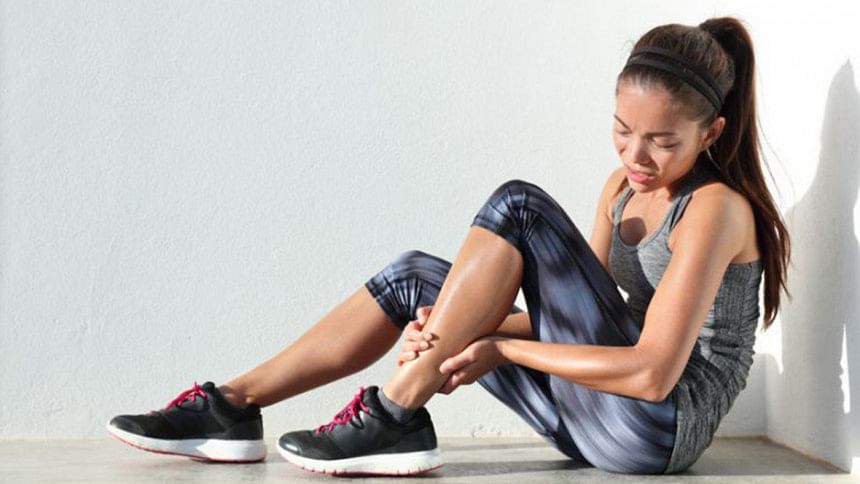3 tips on managing sore muscles

Perhaps you've experienced this before: It's a beautiful day and you're feeling motivated for a run, or some sports and exercise. Fuelled by the desire to challenge yourself, you decide to increase your workout intensity and push yourself harder than you usually would.
It's all fun and games to finally break a sweat and accomplish your goals, but by the end of it, your body suffers from a burnout. Characterised by intense fatigue and muscle pain, what you're experiencing now is a form of shock. That's not necessarily a bad thing.
Muscle soreness acts as your body's healing mechanism for muscle growth. When subjected to physical stress, the muscle goes into overdrive resulting in microscopic damage in the muscle lining. In turn, these small tears lead to inflammation which causes pain.
Think of it as your emergency response centre. Without the tearing and inflammation, there wouldn't be a need for such a call in the first place.
Here's another fact – it affects pretty much everyone including professional athletes. Muscle soreness happens when there's an abrupt change in your typical workout routine, or when you start a completely new exercise programme.
Also known as delayed onset muscle soreness (Doms), normal pain occurs a day or two after a workout and typically lasts for a couple of days.
Despite the negative outcome, muscle soreness shouldn't dampen your motivation to stay active or interfere with your daily life. Instead, there are ways to better manage and ease it should you experience it again.
Warm Up And Cool Down
They say prevention is better than cure. Unfortunately, not many people take it seriously.
Before engaging in any physical activity, it's better to start slow and steady by doing a couple of warm-ups with light exercises like jogging or swimming. This allows your muscle to slowly adapt to the workout movements, and reduce the risk of shock and injury.
Stretch exercises like yoga can also effectively reduce muscle pain. Stretching loosens and lengthens your muscle for improved flexibility performance. Remember to end your workout with a cool down session like a brisk walk or light stretching.
Massage
Once the damage is done, the best way to deal with it is through a hands-on approach – by going for a massage. It doesn't just feel good, it feels heavenly!
Massage increases blood flow to the inflamed area, thus helping the body and the muscles to relax. Massage also helps speed up recovery time and promote muscle repair.
Hot And Cold
A sore muscle is essentially an inflammation of the tissue muscle, so why not fight fire with fire – or even ice? Using a hot pack or muscle rub gently warms the affected area to raise its temperature.
This increase in temperature will dilate the blood vessels for improved circulation, bringing with it a fresh supply of oxygen responsible for healing.
Conversely, cryotherapy or cold treatment slows down blood flow to the injured area to numb the pain of sore muscles. It mitigates the severity of inflammation and reduces further swelling and damage.
As they put it, no pain, no gain. Turns out, the soreness that you're experiencing after your workout is perfectly normal. It's a natural reaction from your body as it adapts to the changes in physical activity.
Almost everyone is affected by it, so don't be discouraged by the dip in your performance. Rest well and take it easy during your next practice round. The pain will usually heal after a few days, or you can resort to treatments to ease the discomfort in the meantime.
Final word of advice, seek professional treatment if the pain persists.
Copyright: The Star Online/ Asia News Network (ANN)

 For all latest news, follow The Daily Star's Google News channel.
For all latest news, follow The Daily Star's Google News channel. 



Comments